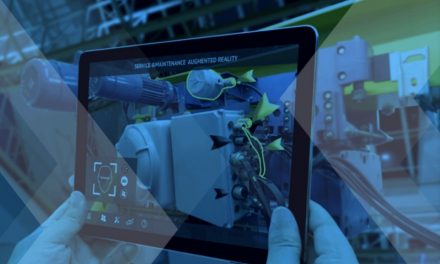Industry 4.0 could end unnecessary maintenance for electronics manufacturers

By Colin Crow, managing director at digital transformation specialist, Nexer

Colin Crow managing director at Nexer Enterprise Applications
In the world’s current uncertain state, being able to operate in a responsive, agile manner that increases efficiency wherever possible is key to success. With exceptional demand already stretching lead times, any additional delay in production could prove costly. Whilst equipment breakdown can wreak havoc within a company’s production schedule, interruptions to operations caused by unnecessary, pre-emptive equipment maintenance is equally unwelcome.
Senior maintenance engineers will know all too well that down-time costs money and the knock-on effects can ripple throughout the business – hampering productivity, blighting customer satisfaction, and damaging reputations, all of which will ultimately harm profits. To mitigate these risks, prevention is a priority.
However, while preemptive maintenance is designed to avoid major equipment failures and the disruption they cause, it is also a drain on resources. Many manufacturers set maintenance schedules at shorter than necessary intervals as part of their preventative measures to ensure serious time-consuming failures do not occur. So how do manufacturers achieve a ‘just right’ level of maintenance? How can they prevent major failures and save company resources at the same time?
The answer lies in the right combination of self-diagnosing devices, 4G and 5G technology, big data, machine learning and artificial intelligence technologies to optimise maintenance, swap-outs and retirement. Using tech in this way will allow maintenance teams to focus on the site visits that genuinely add value to the business.
Although it sounds technical and daunting, a new generation of ERP software platforms means it has never been easier to implement technology and move away from expensive and time-consuming preventative maintenance schedules.
Embracing predictive maintenance
Engineering teams spend as much as 25% of their time maintaining equipment that does not need servicing, demonstrating the obvious benefits of self-diagnosing tech. Modern devices alert engineers to the machine’s health and when they need maintenance work, while also providing important data feedback such as cycle times and environmental conditions. They also create insights that allow manufacturers to determine when a device may fail, when it needs servicing, and when it should be left alone.
Predictive maintenance means that, with the help of AI, data analysis and machine learning, decisions can be based on real-time data produced by self-diagnosing devices. The advantages of this are numerous. Targeting predicted failures before they happen keeps production rolling, leading to positive results for both internal and external customers. At the same time, removing unnecessary maintenance work will save businesses time and money.
In addition to this, the modern self-diagnosing technology will tell engineers when it is time to swap out or retire apparatus with great accuracy.
Maintenance as part of connected enterprise
Digitally optimised, technology-driven maintenance should not happen in a silo. It should exist as part of a connected enterprise, which connects technology, processes and people across the entirety of the business. This helps to unearth a whole new level of insight regarding the way in which each element of the business impacts overall performance.
Connecting across functions in this manner leads to joined up data, shared processes and understanding. This constantly refreshing intelligence can then be used to inform action, with the results clear to see via shared reporting dashboards.
In a connected enterprise, the impacts of introducing predictive maintenance on the factory floor will create a positive ripple-effect on the data processed in other connected hubs, such as finance or operations, for example. If each business function is interlinked with the next, via data and reporting processes, it will be easy to track how a switch to data led maintenance has reduced operating costs, helped to boost customer satisfaction by speeding up production or had an impact on the bottom-line.
Simplifying tech integration
Digital transformation should be a phased process that evolves a business’s existing systems and processes.
Implementing predictive maintenance as part of a connected enterprise will certainly not be an overnight case of out with the old and in with the new and there is no need to break the bank. In the electronics manufacturing sector, existing equipment can often be upgraded to enable data collection and analysis. Current data platforms can be migrated across into AI and analytics friendly systems and new tech can be integrated into existing IT platforms.
Most importantly, specialist providers are able to manage every stage of the implementation process to ensure a smooth and efficient transition based on the best practice solutions for the sector and similar businesses. As electronics manufacturers continue to embrace the power of tech to optimise their operations, it is vital that the predictive maintenance function is part of this digital revolution.
Stay ahead of the recovery curve
Businesses that have already embedded digitalised maintenance programmes will be at an advantage in terms of being able to adapt to changing levels of demand and operating more effectively and efficiently. This will place them at the front of the recovery curve.
With maintenance set to become an increasingly complex beast as the IoT expands, managing, optimising and simplifying the process sooner rather than later makes sense. Currently, there are 50 billion sensors in use, and that number is expected to increase to a massive two trillion in the next few years.
Manufacturers would be well advised to pursue investment in digitalised maintenance technology now, to enjoy the benefits ahead of the competition and stand them in good stead as business slowly but steadily gets back to normal.












